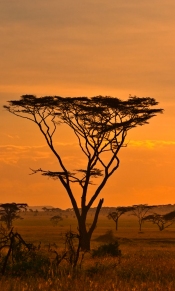- Overview
- Commonwealth initiatives
Tourism in the Commonwealth
 Tourism is central to many economies in the Commonwealth and a growing industry in most. It contributes 2.7% into the total GDP of the Commonwealth, averaging 6.7% of GDP per country and employs 34 million people overall. The smaller the economy, population or country, it has been noted, the greater the significance of the sector to the economy. The highest contributions of the sector for instance are in the Maldives (28% of GDP), Seychelles (24%), Vanuatu (20%) and Antigua and Barbuda (17.4%) – all small island developing states.
Tourism is central to many economies in the Commonwealth and a growing industry in most. It contributes 2.7% into the total GDP of the Commonwealth, averaging 6.7% of GDP per country and employs 34 million people overall. The smaller the economy, population or country, it has been noted, the greater the significance of the sector to the economy. The highest contributions of the sector for instance are in the Maldives (28% of GDP), Seychelles (24%), Vanuatu (20%) and Antigua and Barbuda (17.4%) – all small island developing states.
In Commonwealth Europe heritage and culture are big draws for visitors; the countries are also wealthy and can extensively deliver top-end tourism. Cyprus has been successful also at drawing tourists in all types of markets from the UK to its beaches in the summer months.
Tourism is directly and indirectly central to the economies of the Caribbean; the smaller economies depend on it the most. Geography and climate are major attractions. The Caribbean is a major top-end tourism market and has a growing second home market.
In Commonwealth Asia, Malaysia and the Maldives have been relatively the most successful countries. Malaysia is the second most popular destination in the Commonwealth after the UK with 24 million people visiting the country in 2009, mostly from Asia.
With the exception of Fiji, Pacific island member states with their idyllic natural attractions have had limited success in tourism because of their remoteness and lack of infrastructure, although potential, as experts say, remains. Most of the arrivals are from Australia and New Zealand. Experts argue that regardless of remoteness Commonwealth Pacific islands can do much better given the success of mass tourism seen in Pacific island territories of the USA and France such as Hawaii and French Polynesia, respectively.
Australia and New Zealand attract all types of visitors from businesspeople to backpackers. Tourism Australia, the nationally funded tourism board, largely aims its marketing in Western Europe and North America at the experience seeker.
In Commonwealth Africa, wildlife, climate and geography are major attractions. It is in wildlife that Commonwealth Africa has worldwide prominence with its extensive and popular game reserves such as the Serengeti (Tanzania), Kruger (South Africa), Masai Mara (Kenya) and Chobe (Botswana). Indeed, it is the national parks in the Commonwealth part of Africa that almost exclusively feature in most travel guides. Some countries such as Mauritius, South Africa and Seychelles are top-end tourism destinations.
Canada is a major tourist destination. Cultural themes in its four major cities Toronto, Montreal, Vancouver, and Ottawa are major draws for visitors. Canada is world-renowned for the quality and variety of its ski resorts which no other Commonwealth country can match.
Data WTTC 2011
Commonwealth initiatives

Commonwealth tourism ministers have met regularly since 2004 to explore ways to promote tourism in Commonwealth countries. Issues that have been tabled over the years include the role of sustainable tourism including ecotourism, the need to mainstream tourism as a catalyst to poverty reduction, support for investment activities and the need for better responsiveness and accuracy when a government provides travel advice for its citizens travelling to other Commonwealth countries.


